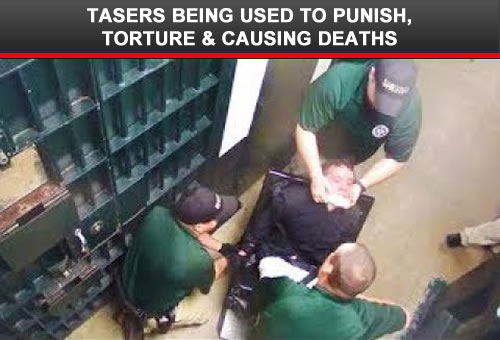100 Years of Racism in Policing
Chicago, 1919: On Lake Michigan in 1919, a white man threw rocks at a Black boy whose boat had drifted to the “wrong” side of the lake. The boy drowned. Protests broke out across the city.
Governor Frank Lowden appointed a commission that found that “Negroes are more commonly arrested, subjected to police identification and convicted than white offenders.” But policing was just one facet of white supremacy, which touched the lives of Black people in housing, in education and in employment. Almost a century later, the Chicago Police Department’s own records from 2000-2015 show that nearly 90 percent of victims of police use of force were people of color.
Harlem, 1935: When a Harlem shopkeeper thought he saw a teen pocket a 10-cent penknife, he tackled the boy to the ground and a police officer nearby arrested him. Protests erupted outside the store as neighbors and passersby suspected the officer was abusing the boy. The resulting riots lasted two days. Three people were killed and 75 people — mostly Black — were arrested.
Amid cries from activists, civil rights leaders, and unions, New York’s Mayor Fiorello LaGuardia set up a biracial commission to diagnose the problem and to prescribe a cure. This commission found that the upheaval was due, in large part, to “the nervous strain of years of unemployment and insecurity of black residents in Harlem,” in addition to “the deep sense of wrong and discrimination against them in the school system and by the police.”
Detroit, 1967: In the summer of 1967, a wave of protests swept the city of Detroit after the police arrested patrons of a “blind pig,” an illegal after-hours bar in a mostly Black neighborhood. The partygoers included two Black Vietnam War veterans who were celebrating their return home. Throughout five days of protests, 43 people were killed, 1,189 were injured, and 7,200 were arrested.
In response, President Lyndon B. Johnson sent in the National Guard and the U.S. Army, turning Detroit’s streets into a combat zone. He also set up a commission to understand the uprising. But when the commission released its findings in the Kerner Report the following year, he ignored most recommendations and set aside its findings that the root causes of the uprisings were disinvestment in Black communities, Black powerlessness and frustrated hopes, and how police “symbolize white power, white racism, and white repression” for significant numbers of Black people.
Los Angeles, 1992: In 1991, a video emerged of California Highway Patrol officers brutally beating an unarmed Black man, Rodney King, during a traffic stop. Four officers were charged, but were later acquitted. The verdict sent shockwaves through South Central Los Angeles. The concurrent drug epidemic, gang violence, and systemic racism added fuel to the fire.
Despite calls for immediate action, including an admission by the post uprising commission that the LAPD could not deal with the root causes of crime, very little changed. More money continued to go to the LAPD while funding for schools, housing, and critical social services came in second. These trends continue today.
Hits: 424


